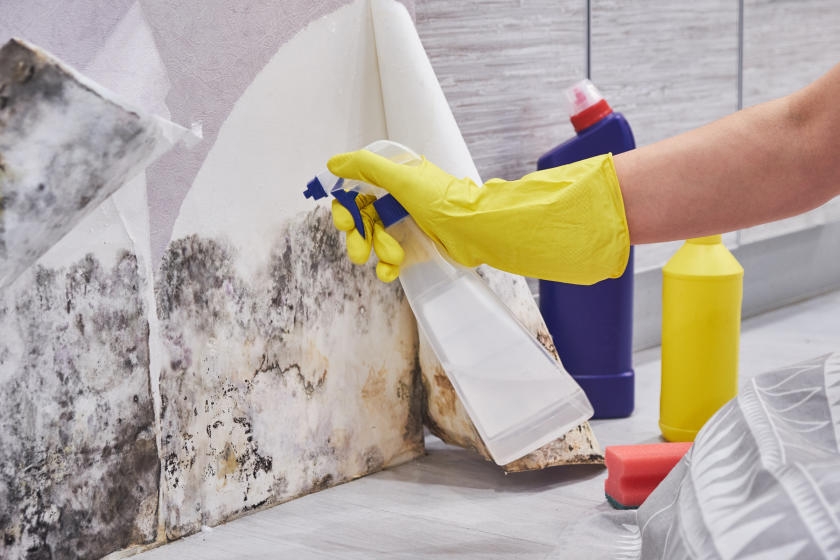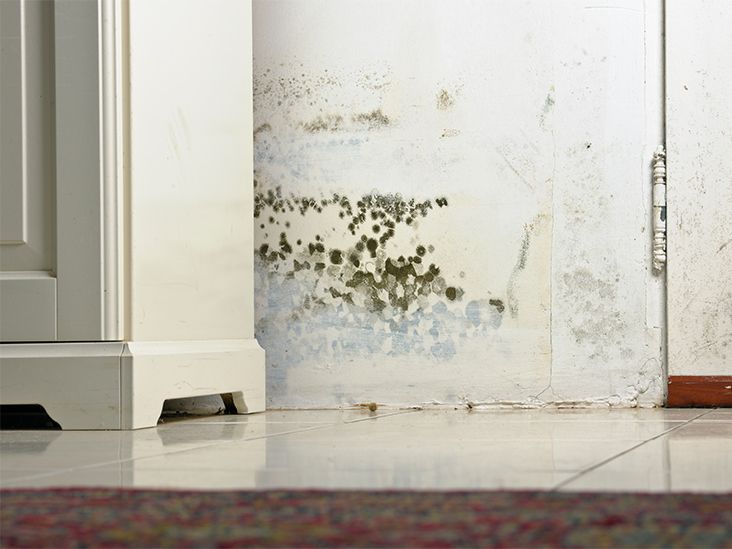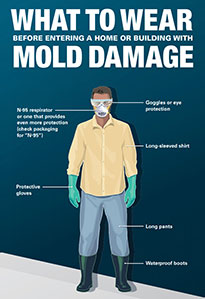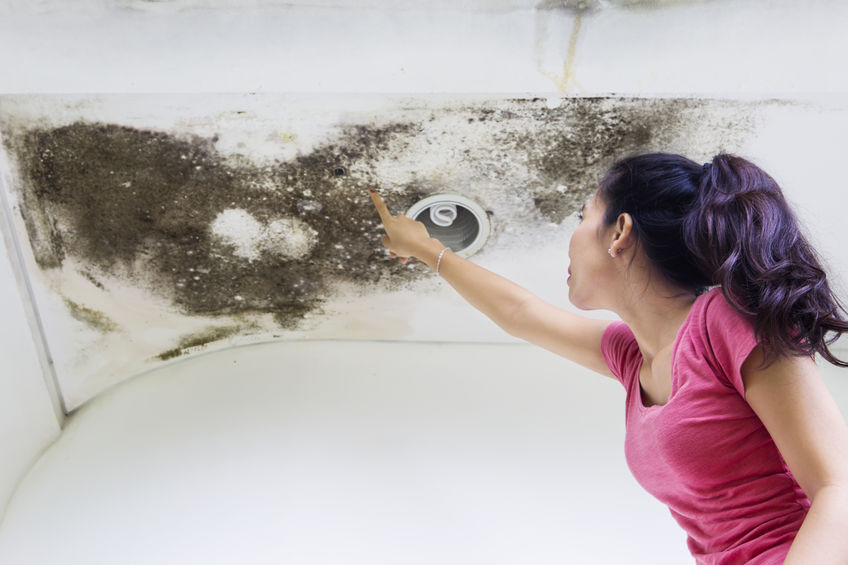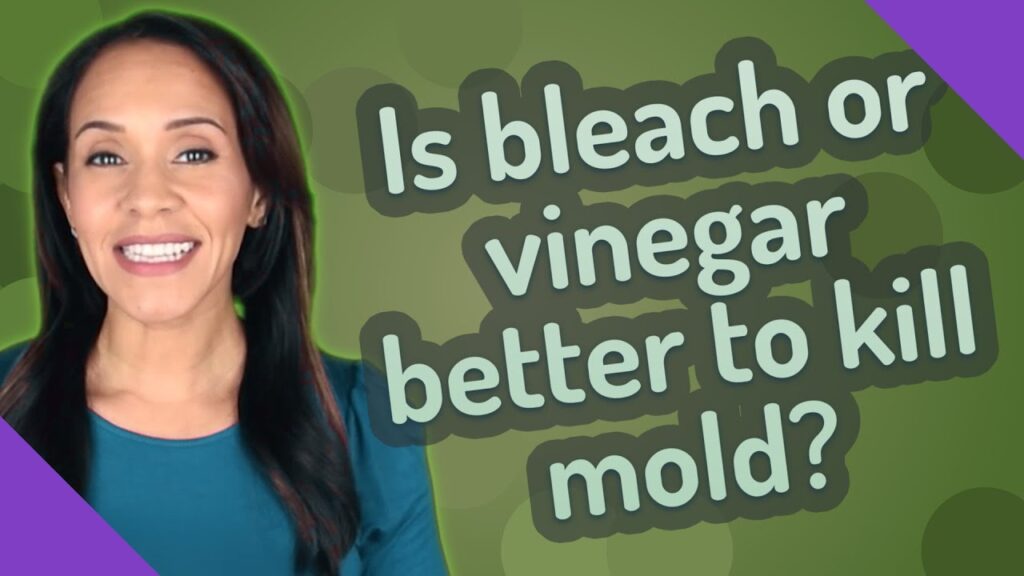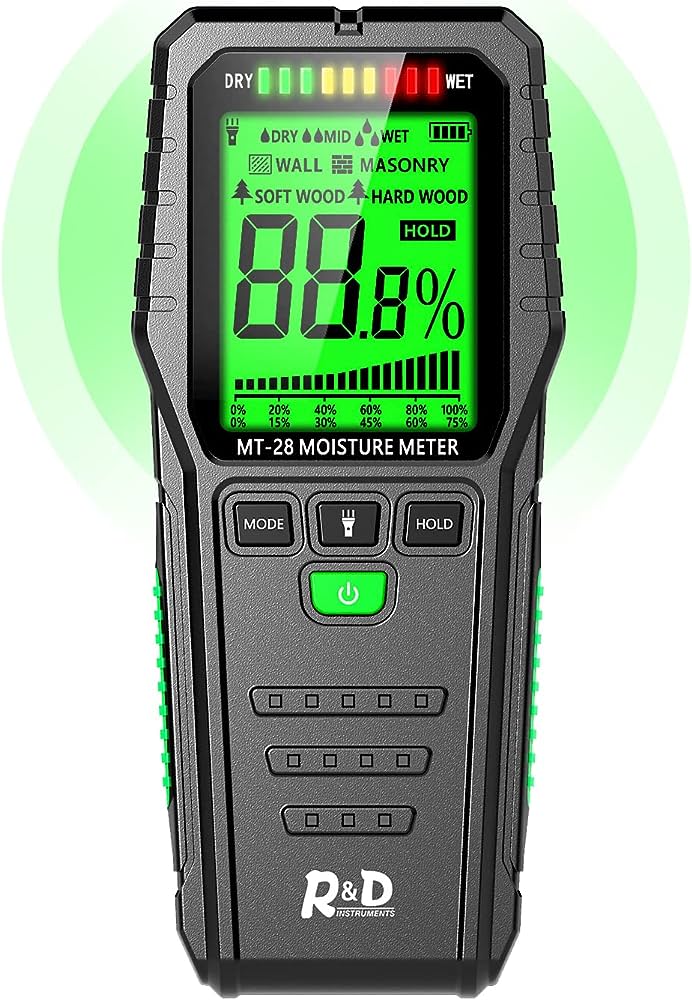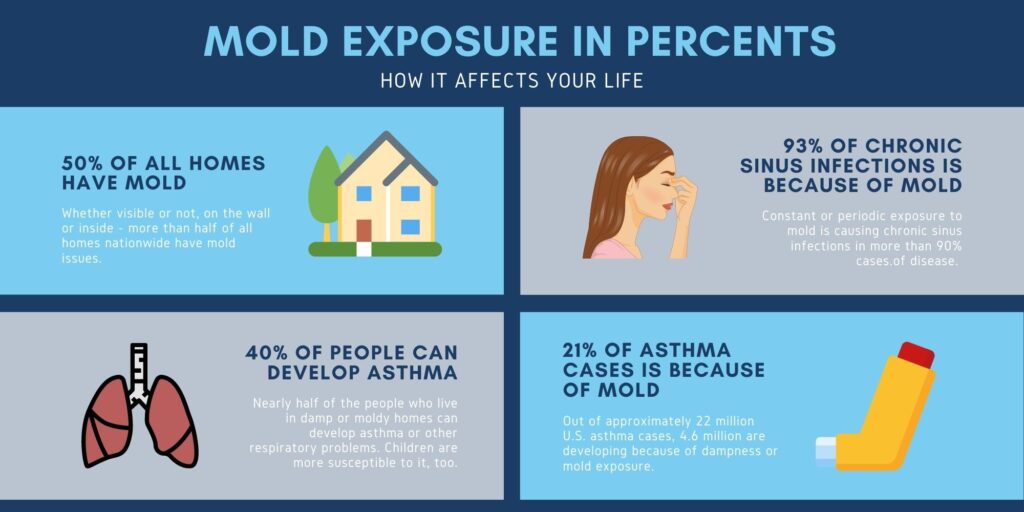If you’ve noticed mold growing on your drywall, you may be wondering if there is a way to rid yourself of the pesky problem without having to tear out the entire wall. Well, the good news is that removing mold from drywall is indeed possible without resorting to drastic measures. In this article, we will explore effective methods and techniques to safely eliminate mold and restore the cleanliness of your walls, saving you both time and money in the process. So let’s dive into this mold remediation journey and discover how you can bid farewell to mold without bidding farewell to your drywall.


Understanding Mold
What is mold?
Mold is a type of fungus that can grow indoors and outdoors, thriving in damp and humid environments. It reproduces by releasing spores into the air, which can easily spread and settle on various surfaces. Mold growth can cause discoloration, unpleasant odors, and even damage to buildings and materials. It is important to address mold issues promptly to prevent further damage and potential health risks.
Common types of mold
There are numerous types of mold that can be found in residential and commercial buildings. Some common molds include:
- Cladosporium: This type of mold is typically found on surfaces such as fabrics, carpets, and wood. It can cause respiratory problems, such as allergies and asthma.
- Aspergillus: Aspergillus is a widely distributed mold that can grow on walls, ceilings, and other surfaces. It can release toxins, which may lead to lung infections and allergic reactions.
- Penicillium: Penicillium is often found in water-damaged buildings and can cause allergic reactions and respiratory issues.
- Stachybotrys: Also known as black mold, Stachybotrys is a toxic mold that requires a significant moisture source to grow. Exposure to this mold can lead to serious health problems, including respiratory issues and neurological symptoms.
It is important to note that these are just a few examples of the many types of mold that exist. Each type may require different remediation methods, depending on its specific characteristics and potential health risks.
Health risks associated with mold
Exposure to mold can pose various health risks, especially for individuals with respiratory conditions, allergies, or weakened immune systems. Some common health problems associated with mold exposure include:
- Allergic reactions: Mold spores in the air can trigger allergic reactions, including sneezing, coughing, itchy eyes, and skin irritation.
- Respiratory issues: Breathing in mold spores can aggravate existing respiratory conditions, such as asthma, and lead to coughing, wheezing, and shortness of breath.
- Fungal infections: Some types of mold, particularly those that produce toxins, can cause infections in the lungs, sinuses, and other parts of the body.
- Toxic effects: Certain molds, such as Stachybotrys, can release mycotoxins that, when inhaled or ingested, can cause severe health problems, including neurological symptoms.
If you suspect mold growth in your home or workplace, it is crucial to address the issue promptly to minimize potential health risks and prevent further damage to the property.
Assessing the Mold Problem
Identifying mold growth
The first step in assessing a mold problem is to identify areas where mold growth is evident. Mold can often be visually identified as black or green patches on walls, ceilings, or other surfaces. However, mold can also grow in hidden or hard-to-reach areas, such as behind walls, in crawlspaces, or under flooring.
In addition to visual inspection, there may be other signs of mold growth, such as a musty odor or water damage in the affected areas. If you suspect mold but cannot visually confirm its presence, it is advisable to consult a professional for further assessment.
Determining the extent of the mold damage
After identifying the presence of mold, it is crucial to determine the extent of the damage. This involves assessing how far the mold has spread and whether it has infiltrated materials such as drywall, insulation, or carpeting.
Small patches of mold may be an indication of a larger problem, so it is important to thoroughly inspect the surrounding areas. Determining the extent of the mold damage will help in deciding the appropriate remediation method and whether or not drywall removal is necessary.
Evaluating the conditions that promote mold growth
To effectively address a mold issue and prevent future mold growth, it is essential to evaluate the conditions that have contributed to its development. Mold requires moisture and a food source to grow, so identifying and rectifying any sources of excessive moisture is crucial.
Common sources of moisture that promote mold growth include leaks from pipes, roofs, or windows, high indoor humidity levels, and inadequate ventilation. By addressing these underlying issues, you can create an environment that is less conducive to mold growth and minimize the risk of future mold problems.
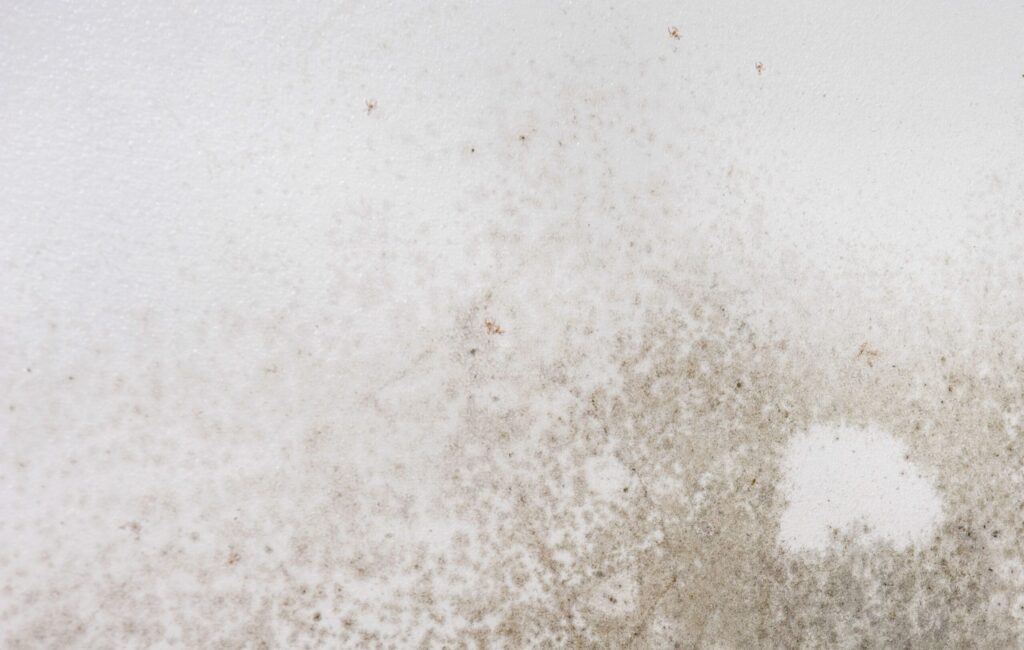

Benefits and Challenges of Drywall Removal
Advantages of removing affected drywall
In cases where mold has infiltrated drywall, removing the affected drywall has several benefits:
- Complete removal of mold: Drywall is a porous material that can easily absorb moisture, allowing mold to penetrate its structure. By removing the affected drywall, you can eliminate the source of mold growth and minimize the risk of recurring mold issues.
- Improved air quality: Mold spores can become airborne and circulate throughout the indoor environment, even if the visible mold is removed. By removing the affected drywall, you can reduce the concentration of mold spores in the air and improve indoor air quality.
- Opportunity for thorough remediation: With the drywall removed, you can access the underlying structure and thoroughly clean and treat the affected areas. This ensures that all traces of mold are addressed and minimizes the risk of future mold problems.
Disadvantages of removing drywall
While removing affected drywall may be beneficial in some cases, it is not always necessary or practical. There are a few disadvantages to consider:
- Cost and time: Removing drywall can be a labor-intensive process that requires specialized tools and expertise. It can also be time-consuming and may disrupt daily activities or require temporary relocation.
- Structural impact: Removing large sections of drywall can impact the structural integrity of a building. It may require additional reconstruction and repairs, adding to the overall cost and complexity of the remediation process.
- Potential for releasing more spores: The act of removing drywall can disturb the mold colonies and release mold spores into the air, potentially spreading the contamination to other areas. Proper containment and safety measures must be implemented to minimize this risk.
Before deciding to remove drywall, it is advisable to consult with a professional mold remediation company to assess the severity of the mold problem and determine the most appropriate course of action.
Non-Removal Methods for Mold Removal
HEPA vacuuming
HEPA (High-Efficiency Particulate Air) vacuuming is a technique used to remove mold spores and other microscopic particles from surfaces. It involves using a vacuum cleaner equipped with a HEPA filter, which is capable of capturing tiny particles as small as 0.3 microns.
HEPA vacuuming can effectively remove surface mold and reduce the concentration of mold spores in the environment. However, it is essential to note that HEPA vacuuming alone may not eliminate the underlying mold problem, especially if the mold has penetrated deep into porous materials like drywall.
Chemical cleaners
Chemical cleaners can be used to kill mold on hard surfaces such as countertops, tile, or metal. These cleaners often contain ingredients such as bleach, hydrogen peroxide, or antimicrobial agents that can effectively kill mold spores and prevent further growth.
When using chemical cleaners, it is important to follow the manufacturer’s instructions, wear proper protective gear, and ensure adequate ventilation in the area being treated. However, chemical cleaners may not be suitable for all surfaces, and they may not eliminate mold growth that has penetrated deep into porous materials.
Dry ice blasting
Dry ice blasting is a non-toxic and environmentally friendly method for removing mold from surfaces. It involves using compressed air to propel dry ice pellets onto the mold-infested area. The extreme cold temperature of the dry ice causes the mold to freeze and dislodge from the surface.
Dry ice blasting can effectively remove mold from various materials, including wood, concrete, and metal. It is a relatively fast method and leaves no residue behind. However, it requires specialized equipment and should be conducted by trained professionals to ensure proper safety and effectiveness.


Remediation Techniques without Drywall Removal
Sealing and encapsulating moldy surfaces
Sealing and encapsulating moldy surfaces can be an effective method of managing mold growth without removing drywall. This technique involves applying a specialized sealant or encapsulant to mold-infested surfaces, effectively trapping the mold and preventing its spread.
The sealant or encapsulant creates a barrier between the mold and the surrounding environment, preventing the release of mold spores. This method is particularly useful for situations where removing the affected drywall is not feasible or when the mold growth is limited to the surface layer.
Applying antimicrobial treatments
Antimicrobial treatments are chemical agents designed to kill or inhibit the growth of mold and other microorganisms. These treatments are applied to mold-infested surfaces after thorough cleaning and drying. They help eliminate any remaining mold spores and prevent future mold growth.
Antimicrobial treatments can be applied to various materials, including drywall, wood, and concrete. However, it is essential to select the appropriate treatment for the specific mold species and follow the manufacturer’s instructions carefully to ensure proper effectiveness and safety.
Using specialized cleaning agents
Specialized cleaning agents formulated for mold remediation can be used to remove mold from surfaces without the need for drywall removal. These agents are designed to break down mold and remove it from materials such as wood, fabric, or tile.
When using specialized cleaning agents, it is important to follow the manufacturer’s instructions and wear proper protective gear. Thorough cleaning should be followed by drying the affected area to prevent mold regrowth. Regular monitoring and maintenance should also be conducted to ensure the effectiveness of the cleaning agents.
Professional Mold Testing and Remediation
Importance of professional assessment
Professional mold testing and assessment are essential for accurately identifying the type and extent of mold growth. Certified mold inspectors have the necessary expertise and equipment to assess mold issues, identify hidden mold growth, and determine the most appropriate remediation methods.
Professional assessment can provide valuable information regarding the severity of the mold problem, potential health risks, and necessary remediation steps. It ensures that the remediation process is conducted effectively, minimizing the risk of further mold contamination or health hazards.
Basics of mold testing
Mold testing involves collecting samples from suspected mold-infested areas and analyzing them to identify mold species, determine spore concentrations, and assess potential health risks. There are various types of mold testing, including air sampling, surface sampling, and bulk sampling.
Air sampling collects samples from the air to determine the concentration of mold spores in the indoor environment. Surface sampling involves swabbing or tape-lifting samples from surfaces to identify the presence of mold and its species. Bulk sampling collects samples of material, such as a piece of drywall, for analysis.
Mold testing should be conducted by trained professionals following industry standards and guidelines. It can provide valuable information to guide the mold remediation process and ensure a safe and effective outcome.
When to hire a professional mold remediator
While some small-scale mold problems may be manageable with DIY methods, it is generally recommended to hire a professional mold remediator for larger or more complex mold issues. A professional mold remediator has the expertise, experience, and specialized equipment to effectively remediate mold and minimize the risk of future problems.
You may consider hiring a professional mold remediator if:
- The mold covers a significant area, such as multiple rooms or an entire basement.
- The mold growth is extensive or has penetrated deep into materials like drywall or insulation.
- The mold is suspected to be toxic, such as black mold (Stachybotrys).
- The mold is hidden or difficult to access, such as behind walls or in crawlspaces.
- The mold is causing severe health symptoms or allergies.
- You are unsure about the appropriate remediation methods or lack the necessary equipment and expertise.
Professional mold remediation offers peace of mind knowing that the mold problem is being addressed thoroughly and safely, reducing the risk of recurring issues and potential health hazards.
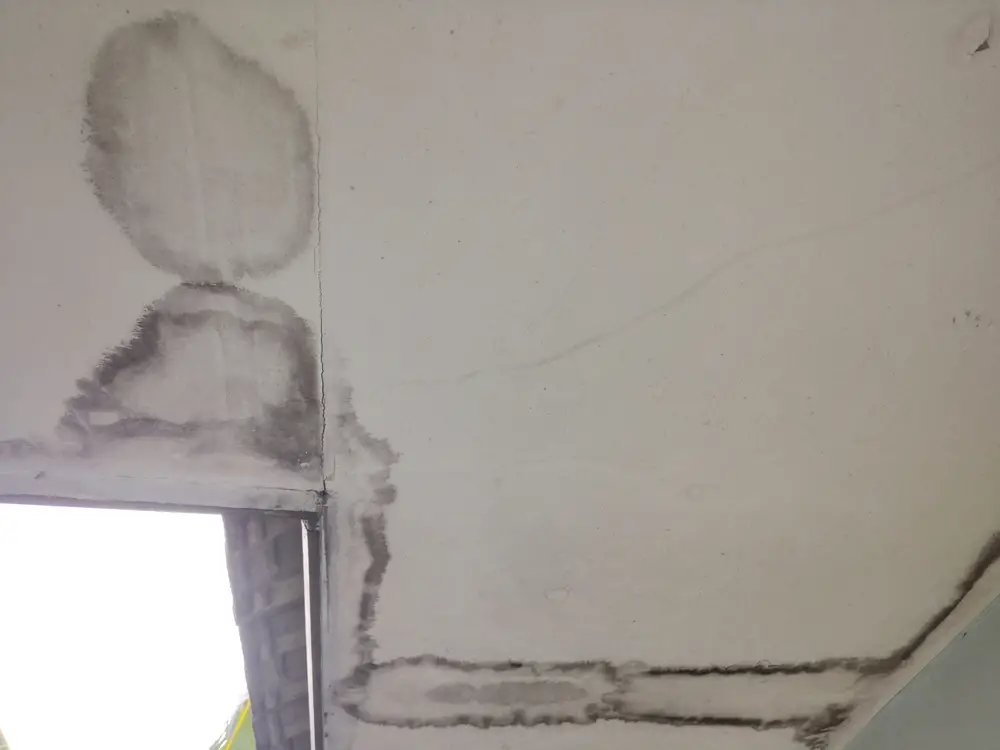

Prevention and Maintenance
Controlling indoor humidity levels
Controlling indoor humidity is key to preventing mold growth. Mold thrives in environments with high humidity, typically above 60%. To maintain optimal indoor humidity levels:
- Use dehumidifiers in areas prone to high humidity, such as basements, bathrooms, and laundry rooms.
- Ensure proper ventilation in kitchens and bathrooms by using exhaust fans or opening windows.
- Repair any leaks or sources of moisture promptly, such as plumbing leaks or roof leaks.
- Insulate cold surfaces, such as windows or pipes, to reduce condensation.
By controlling indoor humidity, you can create an environment that is less favorable for mold growth and minimize the risk of mold-related problems.
Improving ventilation
Proper ventilation is essential for preventing mold growth and maintaining good indoor air quality. Adequate airflow helps reduce moisture and prevents stagnant air, which can contribute to mold growth. Some tips to improve ventilation include:
- Use ceiling fans or portable fans to promote air circulation.
- Open windows and doors to allow fresh air in and stale air out.
- Ensure that air conditioning systems are properly maintained and filters are clean.
- Install exhaust fans in bathrooms, kitchens, and other areas prone to moisture.
Good ventilation helps reduce excess moisture, control humidity levels, and create an environment that is less conducive to mold growth.
Regular inspection for early detection of mold
Regular inspection of your home or workplace is crucial to detect mold growth early. By identifying mold issues at their onset, you can address them promptly and prevent further damage or potential health risks.
Some areas to inspect regularly for mold include:
- Bathrooms and kitchens, particularly around sinks, faucets, showers, and tubs.
- Basements, crawlspaces, and attics, where moisture problems and poor ventilation are common.
- Areas with water sources or potential leaks, such as laundry rooms, utility rooms, and around pipes.
- Any areas with past water damage or history of mold problems.
If you notice any signs of mold, such as discoloration, a musty odor, or water damage, it is important to take action immediately to prevent the mold from spreading and causing further issues.
Safety Measures during Mold Removal
Wearing personal protective equipment
During mold removal, personal protective equipment (PPE) should be worn to minimize exposure to mold spores and potential health risks. Recommended PPE may include:
- Gloves: Disposable gloves made of latex, nitrile, or rubber protect the skin from direct contact with mold and cleaning agents.
- Masks or respirators: Depending on the level of contamination, different types of masks or respirators may be required. N95 respirators or higher filtration masks are commonly used to filter out mold spores.
- Protective clothing: Disposable coveralls or clothing that can be laundered separately can prevent mold spores from sticking to clothing and being transported to other areas.
Properly wearing and disposing of PPE is essential to ensure personal safety and prevent cross-contamination during the mold removal process.
Containing the work area
When removing mold, it is important to contain the work area to prevent the spread of mold spores to unaffected areas. Some containment measures may include:
- Use of plastic sheeting to create physical barriers and isolate the work area.
- Installation of negative air machines or air scrubbers to filter and remove airborne mold spores.
- Sealing air vents, ducts, and openings to prevent the spread of mold spores through the ventilation system.
Proper containment of the work area helps minimize the risk of spreading mold spores and ensures that the remediation process is focused and effective.
Proper disposal of mold-infested materials
Proper disposal of mold-infested materials is crucial to prevent the spread of mold spores and potential contamination of other areas. Contaminated materials should be handled with care and disposed of according to local regulations.
Some general guidelines for disposal include:
- Double-bagging mold-infested materials in heavy-duty plastic bags.
- Sealing bags tightly to prevent mold spores from escaping.
- Labeling bags as “contaminated” to alert waste management personnel.
- Following local regulations for proper disposal methods.
Disposal should be done with caution to prevent the accidental release of mold spores and to ensure the safety of both remediation workers and the environment.
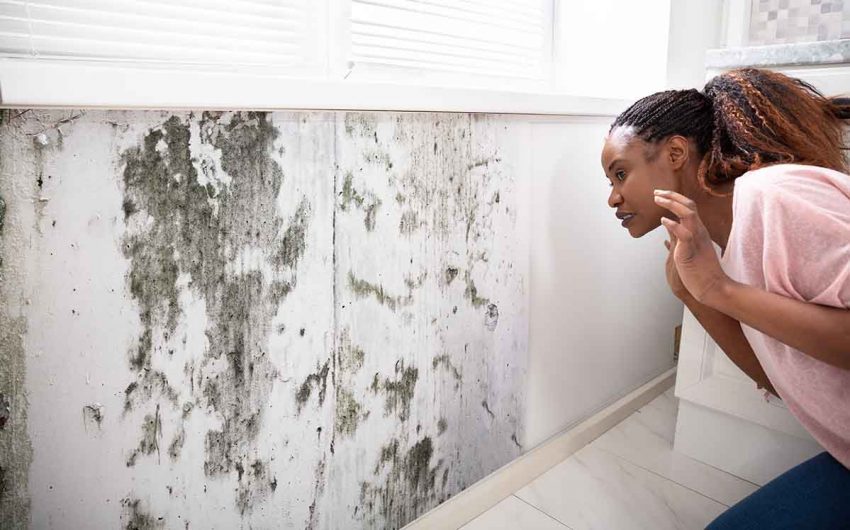

Potential Risks of Not Removing Drywall
Hidden mold growth
One of the risks of not removing drywall affected by mold is the presence of hidden mold growth. Mold can easily penetrate porous materials like drywall, spreading behind the surface. Even if the visible mold is removed, the hidden mold can continue to grow and cause further damage over time. If left untreated, hidden mold growth can affect indoor air quality and potentially lead to more extensive mold remediation in the future.
Continued health hazards
Another risk of not removing mold-infested drywall is the potential for continued health hazards. Even if the visible mold is removed, mold spores can still be present in the surrounding air and may cause respiratory issues or allergic reactions. Mold can release mycotoxins, especially certain types like Stachybotrys, which can lead to more severe health problems. Removing affected drywall reduces the concentration of mold spores and minimizes the risk of ongoing health hazards.
Structural damage
Mold growth within drywall can compromise the structural integrity of a building. Mold can feed on the materials within the drywall, weakening it over time. If left unaddressed, the structural damage can become significant, resulting in sagging walls, crumbling drywall, or even collapse. To prevent expensive repairs and potential safety hazards, it is important to remove mold-infested drywall and address the underlying mold issue promptly.
Conclusion
Understanding mold, assessing the mold problem, and determining the appropriate remediation methods are essential for effectively addressing mold issues. While removing affected drywall may be necessary in some cases, there are also non-removal methods that can be effective in certain situations. Professional mold testing and remediation offer expertise and assurance in tackling mold problems thoroughly and safely.
Prevention and regular maintenance play a crucial role in minimizing the risk of mold growth. By controlling indoor humidity, improving ventilation, and conducting regular inspections, you can create an environment that is less favorable for mold growth and ensure early detection of potential mold issues.
During mold removal, safety measures such as wearing personal protective equipment, containing the work area, and proper disposal of mold-infested materials are essential to protect individuals and prevent the spread of mold spores.
Failure to address mold problems and not removing mold-infested drywall can lead to hidden mold growth, continued health hazards, and structural damage. It is important to prioritize the well-being of your property and the safety of the occupants by addressing mold issues promptly and effectively.

